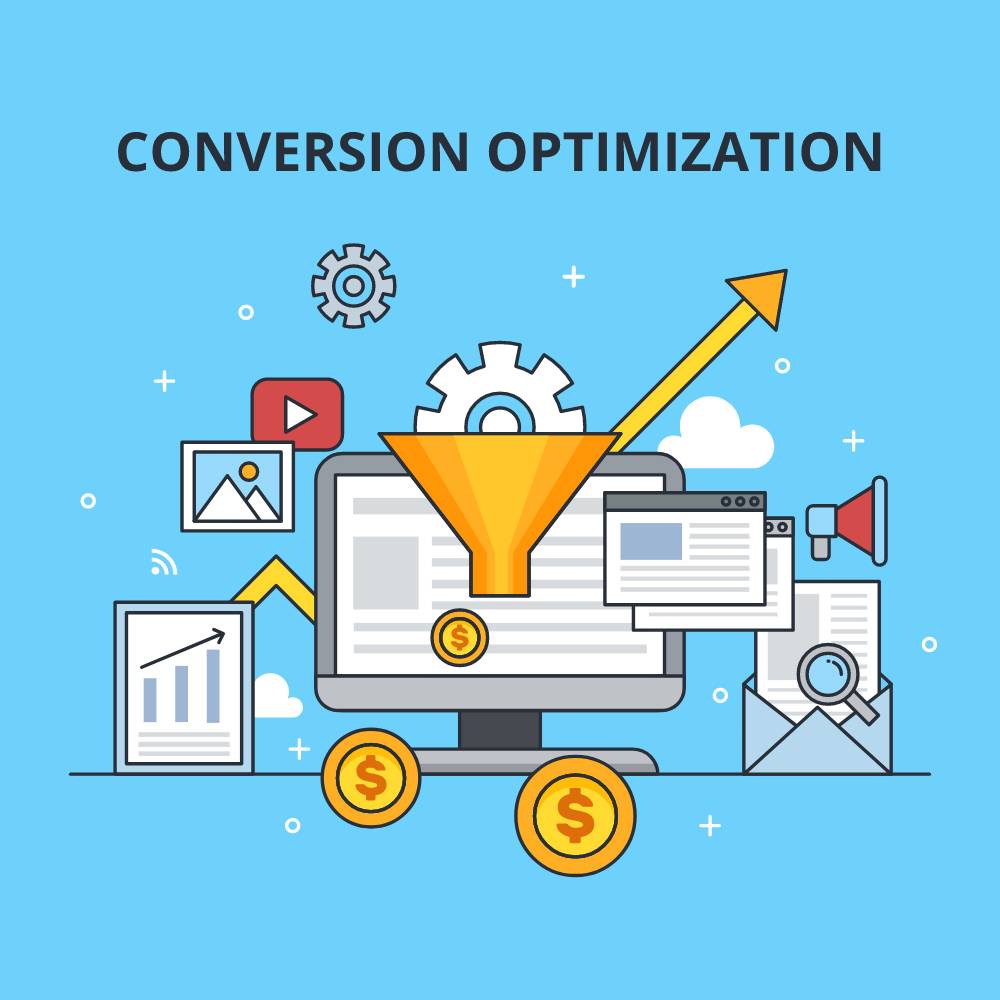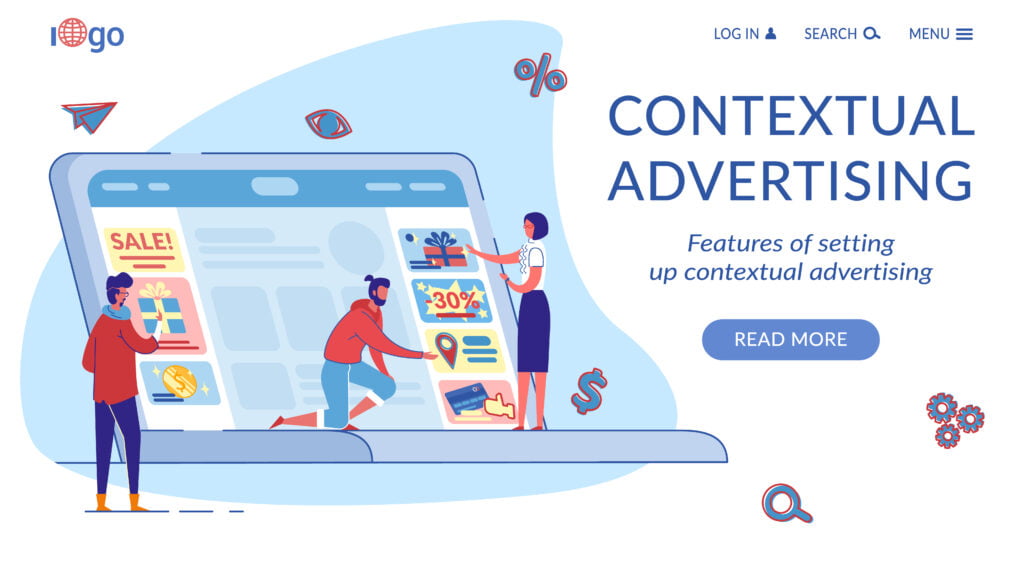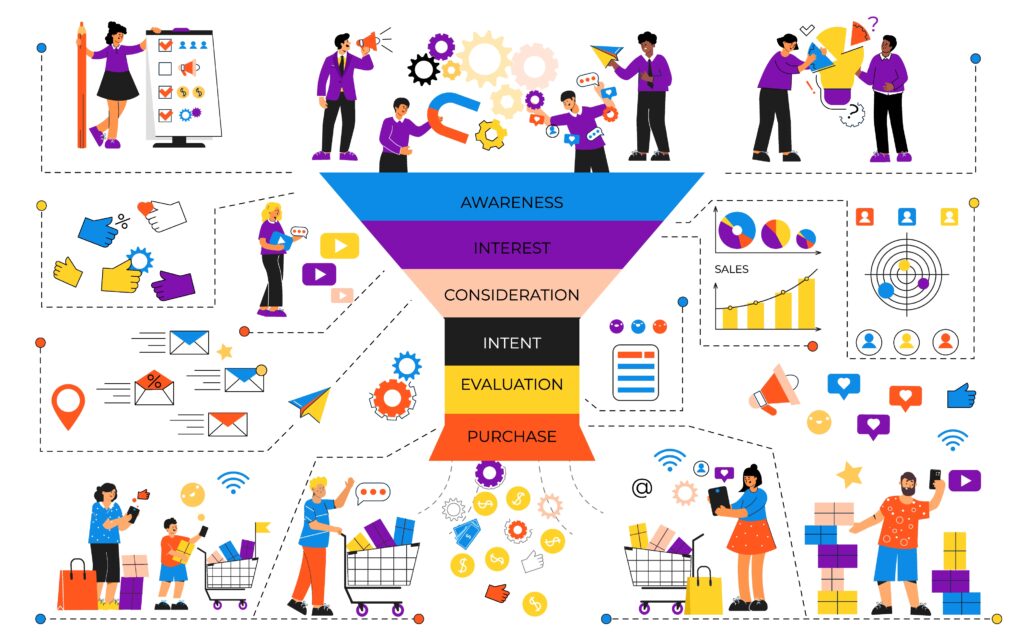What if I told you that you could make more money with the same quantity of visitors you now have?
Conversion optimization often results in more conversions from existing traffic. Better conversions equal more revenue, and more revenue equals more significant growth and overall business success.
That is, the ultimate purpose of any business is to make money. That is why marketers are obsessed with conversion rate optimization. The problem with any fixation is that individuals strive to find the easiest or quickest way to their objective.
Many individuals are unaware that conversion optimization is a multi-step process that needs patience and consistent work.
The ultimate goal of each blog post or landing page is to convert website visitors into clients. The main challenge is ensuring that your website visitors take the steps you want them to take.
There are a lot of great (and not-so-great) recommendations out there, but at the end of the day, it all comes down to one thing: conversion optimization.
Conversion optimization is essential whether you’re receiving good or bad results: testing, evaluating, and optimizing will eventually lead to better outcomes, and there’s always space for improvement in sales and conversions. In this blog article,
I’ll walk you through the nine conversion optimization processes.
What exactly is conversion rate optimization (CRO)?
Conversion rate optimization (CRO) raises the percentage of users or website visitors who take the desired action (such as buying a product or leaving contact details). CRO often entails brainstorming ideas for improving components of your website or app and then evaluating those assumptions using A/B testing and multivariate testing.
Moreover, conversion rate optimization, or CRO, is the practice of improving your website to create more leads. CRO is accomplished by content improvements, split testing, and process advancements. Conversion rate optimization generates more quality leads, revenue, and reduced acquisition expenses.
What is the significance of conversion rate optimization?

Conversion rate optimization is vital because it helps you to reduce customer acquisition expenses by extracting more value from existing visits and users. You can increase your income per visitor, invite more customers, and grow your business by improving your conversion rate.
If a landing page has a 10% conversion rate and has 2000 views per month, the carrier will create 200 conversions each month. If the conversion rate can be increased to 15% by optimizing various page components, the number of modifications made increases by 50% to 300 each month.
When it comes to growing conversions, there is always space for improvement. The most influential organizations are continually iterating and enhancing their sites and applications to provide a better experience for their consumers and grow conversions.
Earlier we have already discussed about 15 Tips To Help You To Scale Your SEO Content Strategy
However, here are the 9 Practical Steps for Conversion Optimization from Marketing Experts;
1. Direct users to appropriate landing pages
Users are constantly expressing their desires. They scatter enough clues over the platform with what they click. We need to make that desire come true sooner.
Landing pages appropriate for conversion optimization Where do you direct consumers who click on/to your platform?
If a person has been looking for a MacBook Air 2018 edition for the past 24 hours and has given up, direct them to a website with just that. When a customer has already purchased a product, and the product requires recurring purchases, refer them to a page that encourages repeat purchases. Send them to the cart if they are close to purchasing (product remaining in the cart).
By putting the bottom creatively, the visitor is taken to a page that contains only the goods listed on the creative. This is because if the consumer clicked on it, it meant they were interested in that or similar things.
As a result, there is no need to display all of the items for sale. Instead, lead them to a website with articles from the creative. Reducing the number of steps consumers need to attain their objective is an essential step toward conversion improvement.
2. Create Contextual Landing Pages

When a user is on your platform, assist them in making faster decisions, or better yet, make them for them. You accomplish this by generating relevant landing page five.
Five pillars for creating a relevant landing page:
- Age
- Gender
- Browsing History
- Transaction History
- Abandoned Cart
If you know these five pieces of information about your user, you can create a highly contextualized landing page.
3: Develop an optimization plan.
To boost your conversions, you must develop a plan that will lead to your duties. Rather than flinging everything at the wall and hoping something sticks, employing a program to assist you along the way can help you achieve more hits than misses.
This is true for any marketing strategy, but it is vital when doing conversion optimization methods; conversion optimization necessitates a lot of testing.
For example, if you want to increase the number of downloads for an e-book you’re giving on your website, you should optimize your eBook landing page.
With a clear plan in place, you can ensure that you’re testing and evaluating every aspect of your landing page, from its design to the shape and color of your call-to-action button and text.
Some critical activities to include in your optimization approach are as follows:
- Setting objectives
- Developing buyer personas
- Identifying optimization tasks
- Results tracking
A solid plan makes it easy to gather relevant information about your visitors and apply it to boost conversions. With this step, you may plan various phases of work, such as website design, landing page design, or A/B tests.
It’s simple to assign tasks to each team member and track their progress, as well as observe when findings need to be analyzed and when it’s time to move on to the next test.
4: Inquire about visitors’ user experiences.
Knowing why people leave your website might assist you in making the necessary modifications to your pages. To understand your audience’s pain areas, you may utilize several ways to acquire information from them. These are some methods for obtaining this information:
- Polls
- Survey
- Interviews with individuals
Visitors might use these to warn you if your website design is inadequate or your offers are unappealing. You may generate surveys for your visitors using a platform like Qualaroo. It enables you to specify how the survey is presented to them. It is critical to ask your prospects the right questions since this will boost the quality of their responses. You may tweak your buyer personas and generate new hypotheses if you get the necessary facts.
5: Identity your sales funnel leaks.

Identifying pages with low conversion rates can lead to the necessary modifications. You must examine your sales funnel to see where people leave your pages. A program like Google Analytics may help you locate these pages and is accessible to everyone with a website. You may examine how users go across your website and where they leave using the behavior flow:
- What pages have the highest bounce rates?
- Why are visitors leaving those pages?
- Which pages retain visitors the longest?
After you’ve answered these questions, you should look at these pages to learn more about their performance.
6: Create straightforward landing pages
One of the essential criteria to remember when developing a landing page is to keep things simple. A basic landing page that gives no distraction to your visitor is a primary reason it performs well. Every piece on the website is designed to increase conversions.
You’ll always discover methods to simplify your landing pages to increase conversions through analysis. What elements distinguish a simple, successful landing page?
- A straightforward page layout
- Page text that is simple and non-technical
- A single deal
- Use of a picture or video to convey a clear message
- A clear call to action button
- Responsive to mobile devices
- There is no navigation bar.
With this in mind, you may reduce the number of items on your landing pages (and sales pages) until you only have elements that lead to conversions.
Consider the following landing page. With so many diversions for the guest, it’s rather complex. It was revamped in this manner, resulting in a 1,250% increase in conversions.
7: Include social proof
Social proof may save you time and effort when convincing your prospects. When you have 3 million clients, it is generally assumed that you are doing many things correctly and that your business is secure.
Moreover, if 4,000 people rank your company 4.7 out of 5, it speaks louder than any sound you can make about it. Showing your website visitors that other people like them have tried and enjoyed your product will have a more significant impact on conversions than anything you can say.
Social evidence is commonly used in the following ways:
- The number of customers
- Testimonials
- Online feedback and ratings
- The number of items purchased
- Number of goods remaining
8: Make your pages mobile-friendly and quick to load.
More visitors will visit your page on mobile than on desktop in most sectors. 60% of Google searches are conducted on mobile devices. Not only that, but Google is now examining and ranking pages using a mobile-first approach.
If your page does not operate well on mobile (even if it is nominally optimized for mobile devices), visitors will just quit and find another option.
It is critical to utilize a mobile-responsive website theme while creating your website pages. Similarly, when developing a landing or sales page, choose a builder that makes your site mobile-friendly.
To determine how mobile-friendly your page is, utilize the Google mobile-friendly test tool. It will also make recommendations on how to improve mobile friendliness.
If your page takes too long to load, one thing will happen: visitors will go. Google discovered that when a website takes up to 3 seconds to load, the likelihood of a bounce jumps by 32%.
That is why you must boost the speed of your website. Use a tool like Pingdom to learn more about your website’s performance and what steps you can take to reduce page size and boost speed.
Some simple activities you may take to improve your website speed include:
- Utilizing a quick website host
- Page components are being reduced.
- Image and video compression
- I am making use of a content delivery network.
9: Run A/B testing regularly.
A/B testing can help you dismiss or validate hypotheses after obtaining information about your visitors and developing ideas. When you have an idea that a modification to your page would boost conversions, you can test that hypothesis by making that change on a variant of your page. If the adjustment reduces conversions, you can abandon your theory.
How conversions increase versions, you may test for a longer time to achieve statistical significance. After that, you can make this adjustment permanent.
It is critical that you only try one-page element at a time to identify the modification that is causing your findings. The following are some of the most crucial aspects to try on your page:
- Headline
- Page design
- Invitation to action
- Offer
- Page reproduction
- Media (images, videos, etc.)
- Background
- Button positioning
Final Thought
Conversion optimization is a systematic procedure. A long-term commitment that involves time, effort, and careful consideration.
Failure awaits those that attempt conversion optimization programs for a brief time to test the waters and hope to see a significant boost from their first effort.
Great benefits await those that prepare ahead of time and implement with a dedication to the process.
Optimization of conversions is not an exact science. You must collect data about your visitors, make theories, then test those ideas.
Then it would help if you did it repeatedly since conversion optimization is an ongoing process.
Regarding conversion rates, there is always space for improvement because client behavior continuously evolves.




